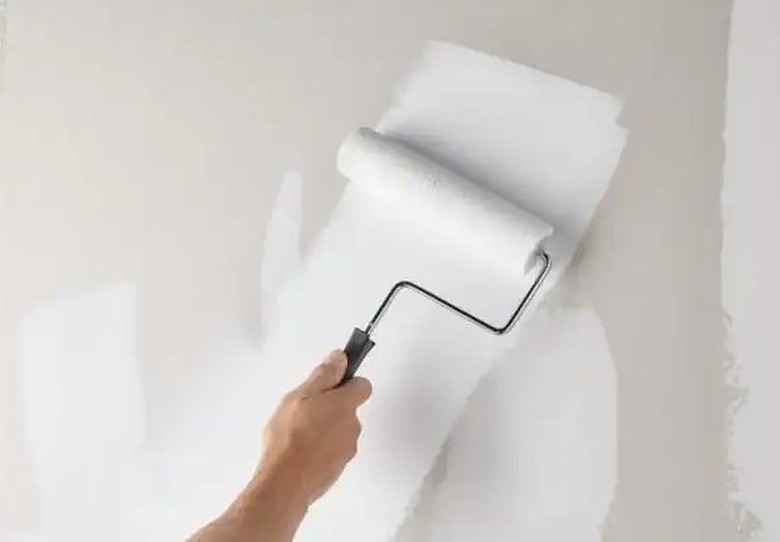How To Remove Paneling Glue From Drywall
We may receive a commission on purchases made from links.
Whoever put up the wall paneling that you just took down had no idea that it wouldn't be there forever and probably used construction adhesive to secure it to the drywall. There's a nonzero percent chance that this extremely strong glue tore off some of the drywall paper when you pried off the paneling, but that's the least of your worries. What do you do with the glue that's still there? Removing it is a simple process, but it's also painstaking.
Why the Glue Has to Go
Why the Glue Has to Go
If you're planning to paint the wall or hang wallpaper, you need a smooth wall, so the reason you can't leave the glue is obvious. In the case of wallpaper, not only will it show up as a bump under the paper, but it will probably also inhibit the action of the wallpaper paste, and the wallpaper won't stick. This is true even if the glue ridges aren't very high.
If you're planning on installing new paneling, you have a little more leeway in that you only have to remove the high ridges. They'll prevent the paneling from getting close enough to the wall for the new adhesive to stick. You could get around this by nailing the paneling instead of gluing it, but the high ridges will create noticeable bumps in the new paneling, so they have to go.
How to Remove Construction Adhesive From Drywall
How to Remove Construction Adhesive From Drywall
The manufacturer of Liquid Nails recommends softening the adhesive and scraping it off with a putty knife and describes two ways to soften it.
The first way is to heat it. You can use a heat gun for this as long as you hold it a safe distance away to avoid igniting the paper. You can also use a hair dryer at its highest setting. Run the heater back and forth along each bead of adhesive until the bead is soft enough to scrape.
The second way is to soften the adhesive with petroleum jelly, mineral spirits, or a commercial adhesive remover. This takes time to work — as long as 12 hours — so if you use something that evaporates, like mineral spirits, you'll have to reapply it repeatedly. Once the adhesive softens, go to work with the putty knife, being careful to dig into the paper as little as possible.
How to Repair the Drywall
How to Repair the Drywall
After the glue is gone, you'll need to repair the paper tears, and because drywall is such a forgiving material, this is easier than you might expect. Start by cutting off loose paper with a utility knife (don't just pull it). The next step is one you shouldn't skip: Apply a coat of drywall primer to the exposed gypsum to seal it. This prevents any paint you apply from blistering.
The last thing you need to do to get the drywall ready for paint, wallpaper, or any other treatment is to cover all the loose gypsum with drywall joint compound. Apply one coat, scrape it flat, let it dry, and then apply a second coat and scrape it. When the second coat dries, sand the joint compound smooth using 120-grit sandpaper. You can do this by hand or with a pole sander. Finally, apply one more coat of drywall primer to the freshly sanded joint compound to seal it.
